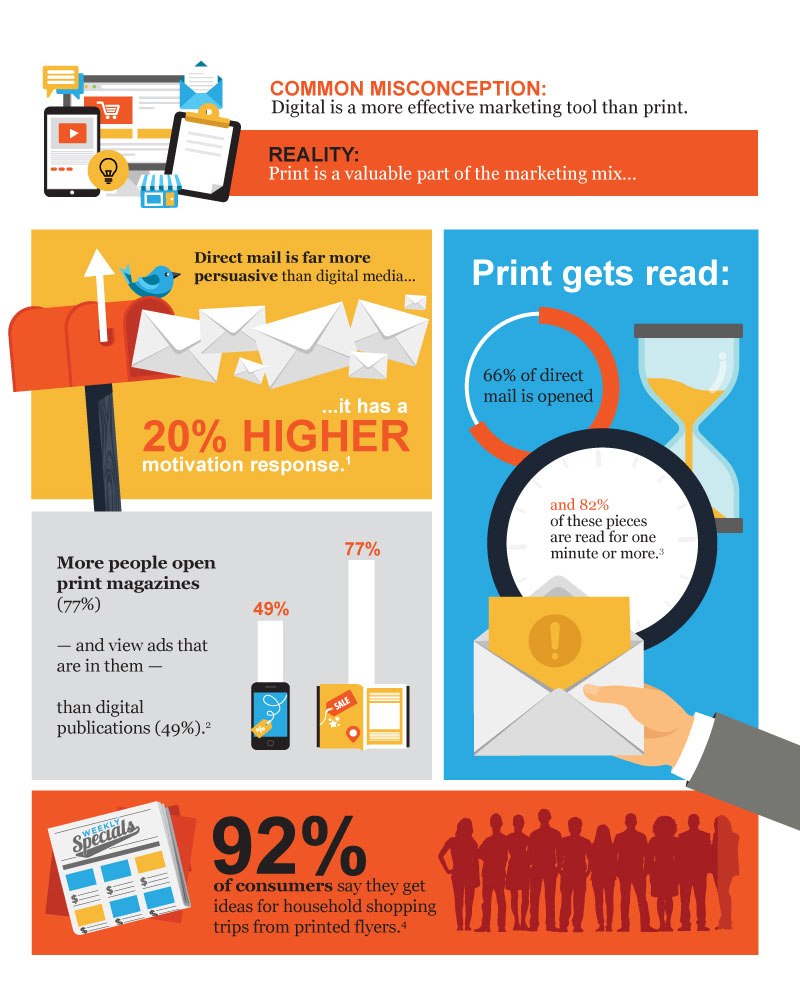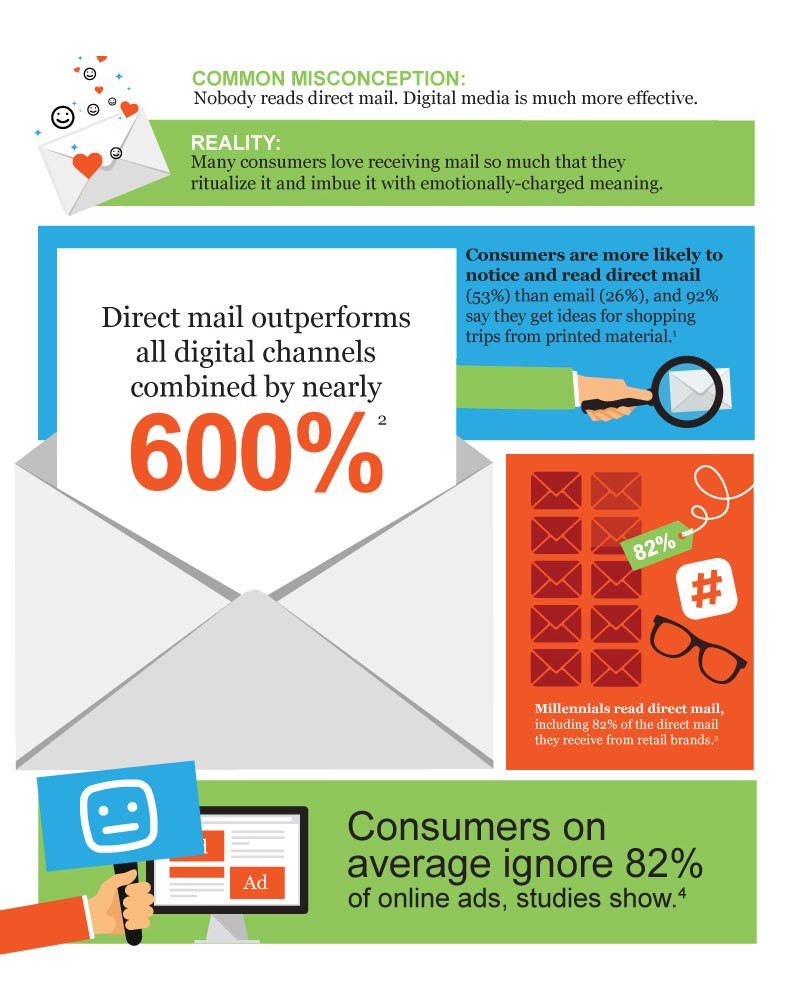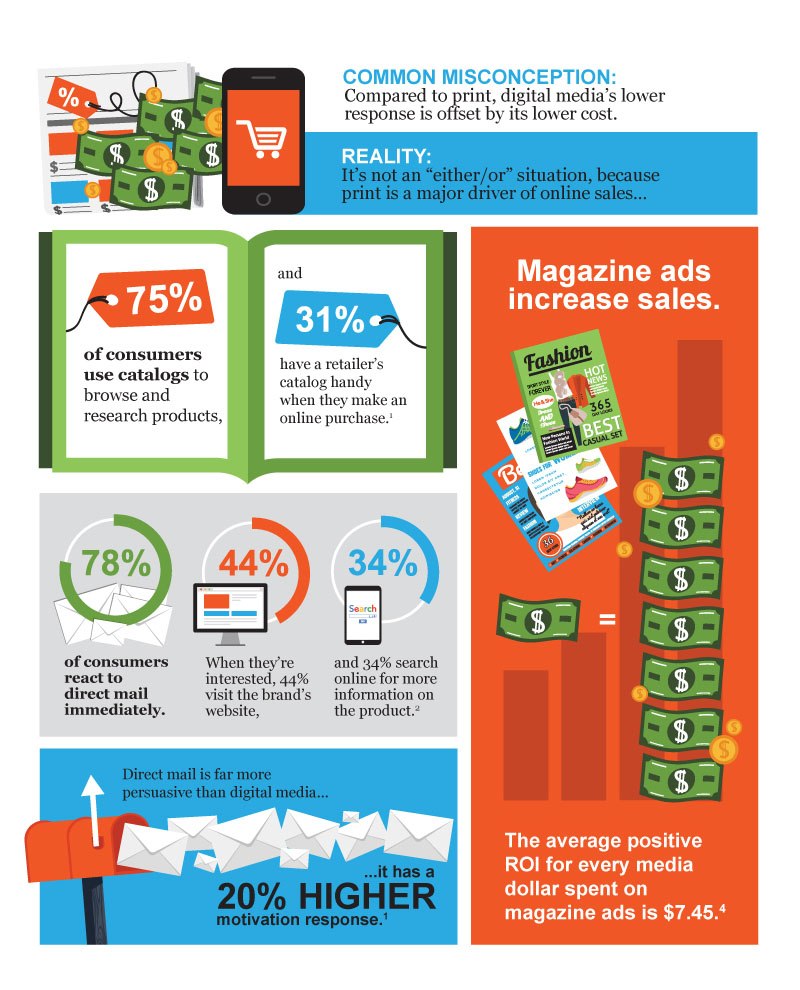Over the last 10 to 15 years, technology has drastically changed workplace attitudes and processes. Mobile devices, CRM systems, cloud computing and big data have all left their marks on the way we work, run businesses and ‘do’ marketing.
According to McKinsey, technology drives business value in four ways, by enhancing connectivity, automating manual tasks, improving decision making, and innovating products and services.
With advancements in digital printing, corporate printing can now benefit from such value creation.
Print is not dead - it’s going digital
The rise of digital printing has given marketers the ability to carry out small, targeted on-demand print runs and, as an industry, is set to grow to a mammoth $300 billion by 2024.
This is a big change from the days of mass offset printing, when marketing materials had to be produced in large quantities in order to achieve any type of cost efficiency, but there is still much change to come.
The print industry is 50 times the size of the music industry and growing rapidly thanks, in no small part, to the marketing industry, which continues to grow and evolve print alongside the plethora of established and emerging digital channels.
Print’s place in the marketing mix
Print continues to have a place in the marketing mix - because it works. Four-fifths (79%) of consumers will act on direct mail immediately compared to only 45% who say they deal with email straightaway.
Targeted directed mail boasts a 4.4% response rate, compared to email’s rate of 0.12%.
That is why online brands like Airbnb launch print magazines to reach important stakeholder, print catalogues are on the rise, 10 billion business cards are printed in the US each year and advertising print totaled $45.2 billion globally in 2013. Growth averaging 4.5% per year is predicted to continue to 2024.
“We don’t print that much”
While many business processes have been digitalized – resulting in increased efficiency – ordering prints is still a very manual process for most companies. Printing is often handled differently, with different vendors per department, office or brand.
When asked how much printed marketing their organizations produce, most people will reply “we don’t print that much.”
They might be right, but more likely is that they don’t actually know how much is being printed by their company. Printing costs are often hidden in many different budgets; marketing, sales, HR, office management - and thus not viewed as a priority for process optimization and digitalization.
Digital transformation goes beyond printing technology
Since Gutenberg, printing has been part of everyday life – but at a price. The most effective way to contribute to sustainability around printing is to reduce paper usage, to minimize transport distances and to prevent waste.
To date, paper reduction programmes have been centered around office printing. All major office printing machine and office software suppliers have introduced programs to educate about, monitor and restrict office printing.
Commercial printing (brochures, posters, flyers and more) has not been part of this innovation driven by sustainability goals. Digital printing and the services developed around it are changing things quickly.
Just-in-time delivery or on-demand printing is now possible - even if a sales event is in three days and on a different continent. There is no longer a need to produce extras for the “just in case” scenario.



